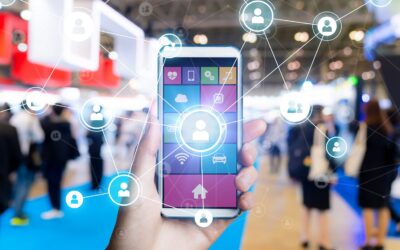Triage and Technology: 5G Connectivity for Real-Time Collaboration in The Most Stressful Times
25
January 2022
Pente Networks Marketing
Throughout the emergency service sector, the necessity for rapid, effective, and data-driven responses has been an essential prerequisite in day-to-day operations, with emergency helplines even further inundated due to the Coronavirus pandemic.
As a result, the prevalence of innovative and cutting-edge 5G technology has increased, improving the outcomes of vital life-or-death situations across fire and rescue, law enforcement, and emergency medical services.
Recently, Gartner reported the pandemic had fueled the rise of 5G network infrastructure worldwide by 39% in 2021. This expanse of 5G networking strengthens the reliability of critical communication systems through a plethora of benefits, including edge computing, adaptive smart sensors, and greatly reduced latency that can hasten the transfer of data and overhaul inconsistent traditional systems.
Many 5G networks are also supported by Citizens Band Radio Service (CBRS), made of 150 MHZ of the 3.5 GHz band that reaches 3.7 GHz. It is a cellular solution that functions between unlicensed and licensed connectivity solutions. Utilizing the available CBRS spectrum to reduce the degradation of signals for 5G monitoring technology and ensuring networks retain a stable connection throughout a crisis allows operators to effectively respond to an influx of emergencies from any location appropriately.
“Enterprise 5G provides communities with an ability to securely, predictably, and efficiently connect the first responders with ER doctors and nurses even as those who require immediate care are being seen at home, then driven to the hospital by ambulance,” said Roy Timor Rousso, CRO, JpU, an enterprise 5G network service provider. “Only with the low latency and reliability of 5G can communities stay connected – whether directly or through a dispatch system that orchestrates collaboration on mobile devices and connected vehicles.”
Additionally, CBRS can be employed through 5G mobile devices and wearable cameras being developed for the field that can be used in various scenarios to transmit and receive data from first responders. This enables them to thoroughly analyze available data in response to the developing situation instead of interpreting and making decisions with limited intelligence.
“Communicating this essential information and providing enhanced navigational systems can become critical to saving the lives of the victims and the respondents,” Roy Timor Rousso said. “Both are often in life-threatening events such as fires, the ability to receive real-time instructions and knowledge through medical records and structural information is critical.”
In addition to his work with JpU, Timor-Rousso is a Col. in an elite mobile infantry unit in the Israel Defense Forces (IDF), the sole military wing of the Israeli security forces. “Some of the prime applications being developed are using 4G/5G enabled platforms in the field, adopting innovations including the ability to have a remote doctor guide a medic, helping them help the wounded using an HD camera, high-quality audio, and augmented reality. Another scenario is the ability to have a soldier in the field tap into an expert or engineer when they need to dismantle a piece of machinery in a certain way, or otherwise respond to an incident.”
Boasting exceptional low latency and increased data transfer speeds, 5G networks reportedly can support over 1 million connected devices per square kilometer whilst requiring greatly reduced wiring and other physical infrastructure.
With the continuing investment into 5G networks, it is increasingly likely that other innovative devices will be used by these networks in enhancing the already powerful security systems it enables for citizens and respondents who consistently offer their lives.
Originally published on HealthTech Zone
Similar Blogs
Smarter Ways to Connect Schools and Universities: The Speed, Security and Cost Efficiency of 5G Enterprise Networks
The digital transformation of education has accelerated over the last few years, in large part due to the impact of the global pandemic, which forced many institutions to move to 100% virtual classrooms and teacher-student interactions.
JpU To Exhibit and Speak at the 5G Enterprise Conference
JpU, developer of a revolutionary enterprise cellular 4G/5G platform, today announced will be demonstrating their full offering, including their HyperCore Platform, which empowers Enterprises, Service Providers, System Integrators and OEMs to build Enterprise 5G Private Networks quickly, predictably, and cost-efficiently, at the Enterprise 5G conference November 16 – 18 at the Santa Clara Convention Center.
The Broad Potential of CBRS and Enterprise 5G in Supporting Industrial Innovation in Distributed Environments
While the debate continues regarding the various network protocols and approaches in the context of supporting industrial applications and infrastructure, there is no debate about the potential for 5G and the opening of CBRS bands in the United States to replace complex, expensive, and risky networking wit solutions that inherently are simpler, and deliver higher speeds and optimization software that leads to greater network transparency and control.


